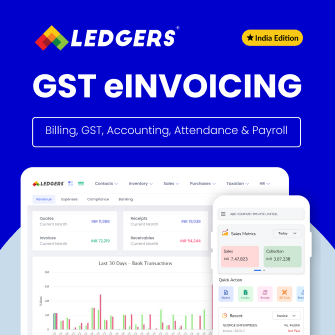
You can easily complete GST E-Invoicing Software Filing (GSTR-9) firm registration online through Compliance Gurukul. For a sole GST E-Invoicing Software Filing (GSTR-9) registration, only the PAN & Aadhaar card of the business owner is required. We can help you obtain the following registrations in less than 15 days:
Once, you have registered for the GST E-Invoicing Software Filing (GSTR-9) firm registration online on Compliance Gurukul, please follow the steps below and upload the following documents by logging into Compliance Gurukul Software.
E-invoicing under GST refers to the electronic generation of invoices as mandated by GST regulations. Similar to the requirement for GST-registered businesses to issue e-way bills when transporting goods, specific GST-registered businesses are also required to generate electronic invoices for Business-to-Business (B2B) transactions.
As of the latest updates, starting from August 1, 2023, e invoicing becomes mandatory for all GST-registered individuals whose aggregate turnover (as per their PAN) in any preceding fiscal year from 2017-18 onwards exceeds five crores.
To facilitate a smooth transition to e-invoicing, Compliance Gurukul introduces the LEDGERS GST e Invoicing software, which is designed to simplify and streamline the e-invoicing process for businesses.
The e-Invoice system is a digital verification mechanism under India's GST framework, where B2B invoices are authenticated electronically by the GST Network (GSTN). This system facilitates the issuance of a unique identification number for every invoice via the Invoice Registration Portal (IRP), managed by GSTN.
Upon generation, all invoice details are instantaneously transmitted from the invoice portal to the GST and e-way bill portals. This synchronisation eliminates the need for manual data entry during the GSTR-1 return filing and the generation of part A of the e-way bills, streamlining these processes.
For e invoicing under the GST framework, the following documents are necessary: